Give In-Take
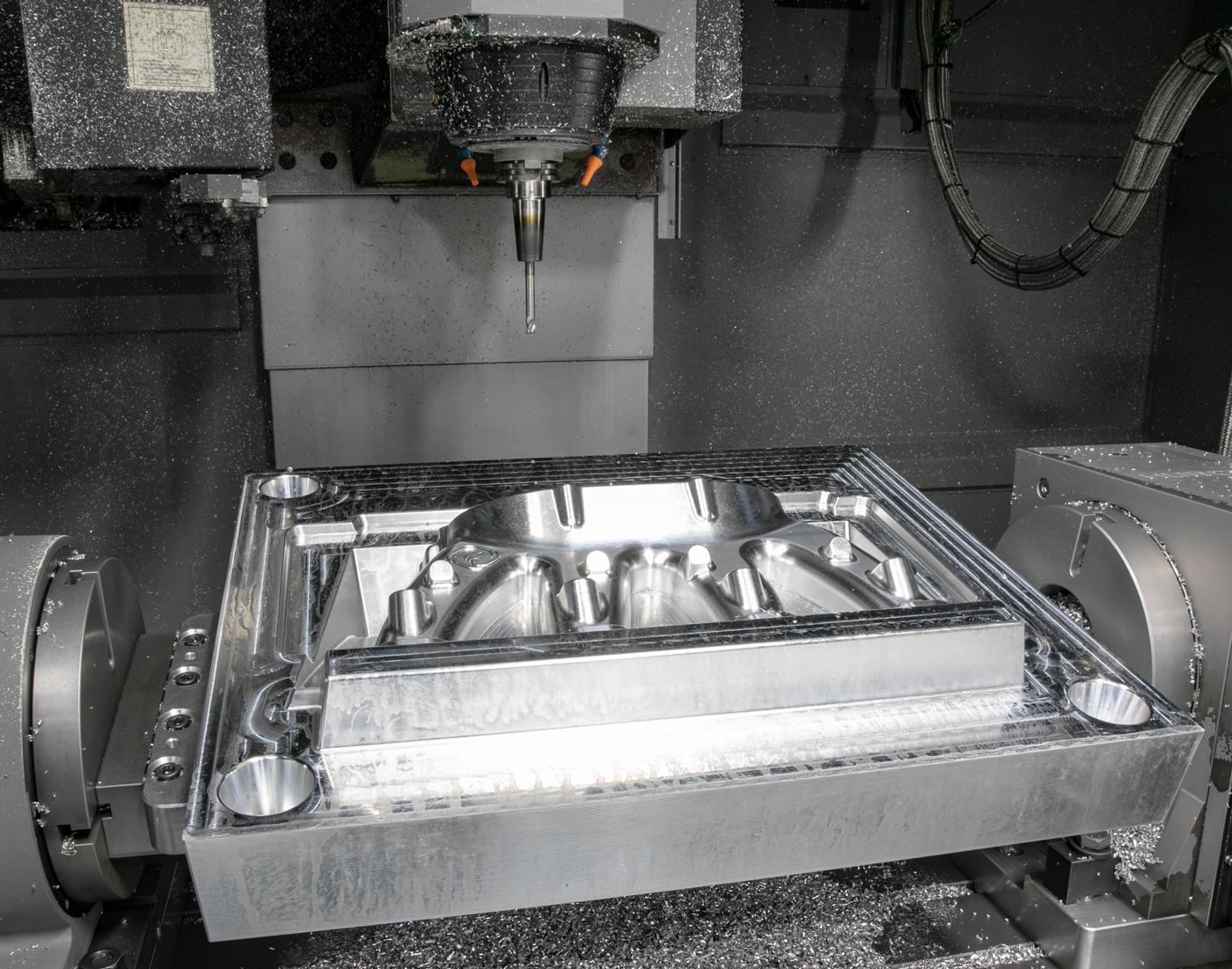
In the realm of custom manifolds, a good compromise may just be the best power solution.
“There’s a lot of power in the intake manifold, and that is why we build custom intakes,” said Tony Bischoff of BES Racing Engines, Guilford, Indiana. “The intake itself—with runner length, taper, plenum design, and such—is very critical to making the engine operate in the power band that you want it to run. It’s almost more critical than the camshaft selection.”
Race engines are becoming more ‘one-of-a-kind’ these days, even those built from a popular and common engine platform. As engine builders modify cylinder heads, experiment with deck heights, and become more daring with power adders, a custom intake may be required to complete the game plan. Intake design has become both a science and an art for some shops, and there’s no shortage of information exchange when building one for a specific race application.
“We have a four-page data sheet that every manifold customer has to fill out,” said Keith Wilson of Wilson Manifolds, Ft. Lauderdale, Florida. “We build the manifold to their combination. We can narrow down every spec to what we need to build.”
“Everybody seems to want something different,” added Taylor Lastor of TRE Racing Engines, Cleveland, Texas, a shop that advertises that every one of its sheetmetal intake manifolds is custom made for each application. “We’ve done them for just about anything you can think of.”
The majority of custom intake builds are for popular domestic V8 platforms, although a few of the import straight-six engines—such as those from BMW and Toyota—are gaining strong support in the market. Even late-model supercharged V8 engines are drawing interest from custom designers to increase power and improve the looks of the induction system.
Jeff Smith of Late Model Throttle in Waukesha, Wisconsin, specializes in designing unique billet-aluminum products. He understands that there is a small but willing clientele who will spend $7,000-plus on a full-billet intake with an intercooler, but he also wants to take advantage of off-the-shelf components to bring the price down and still deliver improved performance.
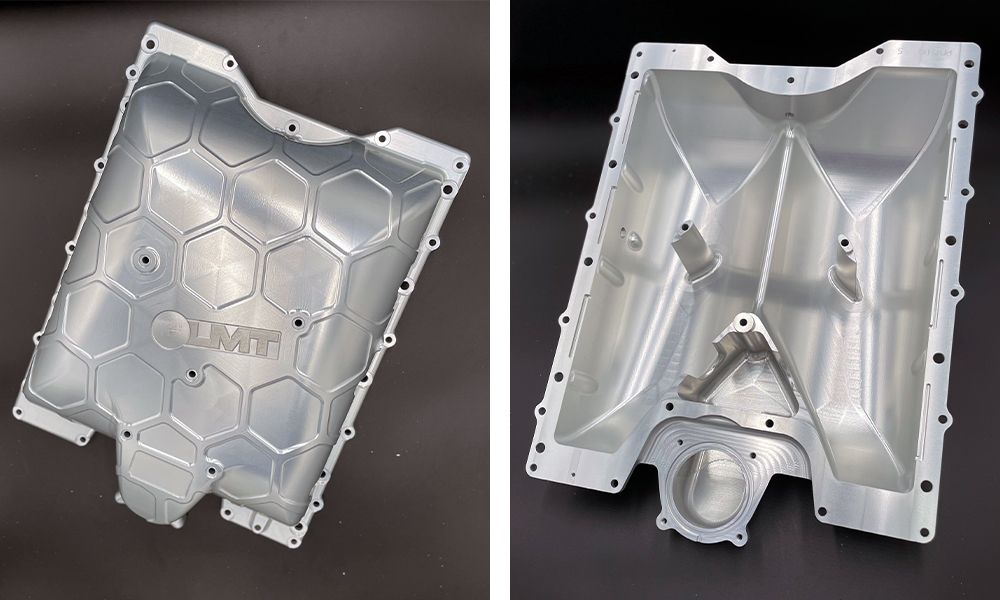
“There’s not a lot of nice-looking intercoolers for the Hemi,” noted Smith. “So, my plan is to make the lower piece to fit the Hemi and then have a LS Holley Hi-Ram bolt pattern on top. My friend Ron at Sheer Fabrication makes a billet air-to-water intercooler for turbo applications that fits the Hi-Ram. I’ve seen stuff fabricated for the Hemi world, so I’m sure the owners would love to see a billet one instead.”
Smith has a Hemi engine in the shop that he’ll measure using a laser scan and a CMM (coordinate measuring machine) to confirm the dimensions. One objective is to keep the profile as low as possible to allow the largest intercooler to fit under the hood. The Hi-Ram top would also fit on the intercooler to keep the cost in check.
“I could also do a custom lid with an elbow, or whatever was needed,” added Smith, noting that many of the custom intakes with integrated intercoolers for the Hemi haven’t been very attractive for a $50,000 engine. “People like things to look nice when they open the hood. It’s not just all dyno numbers.”
New designs don’t always make power. Smith designed a new billet lid for the supercharged Hellcat Hemi engine with a beautiful CNC-machined honeycomb pattern. All the dimensions and design cues looked like it would improve power. He had already designed a billet lid for the Ford Mustang GT500 that picked up 35 horsepower on a chassis dyno, and he leveraged many of those ideas.
“I had a friend test the Hellcat lid and he lost horsepower,” he said. “I plan to test it again in my shop. You do spend a lot of time, money, and engineering on something that looks good on the computer but doesn’t always come out right in the real world. Still, it’s a cool project, and some people will want it whether or not it makes horsepower. But for me personally, as a performance shop and as a CNC enthusiast, I have a hard time selling something that loses horsepower.”
A post-test diagnosis revealed a couple of areas where Smith can make design changes to reduce turbulence and increase the air speed, so more development will follow.
Experience vs. New Technology
Testing, changes, and more testing seem to be the foundation of most intake manifold development. Advances in computer programing have led to computational fluid dynamics (CFD) software that is designed to help engineers analyze airflow and experiment with designs before committing to a CNC program.
The majority of racing intakes, however, are designed based on experience.
“We have a basic CFD program, but to really do CFD at a Formula 1 level you need programs, engineers, and computers that are quite expensive,” said Wilson. “Plus, it takes so much data input to get a real answer that it’s not feasible for every job. We do a little CFD, but most of the design is from experience and formulas that we’ve proven.”
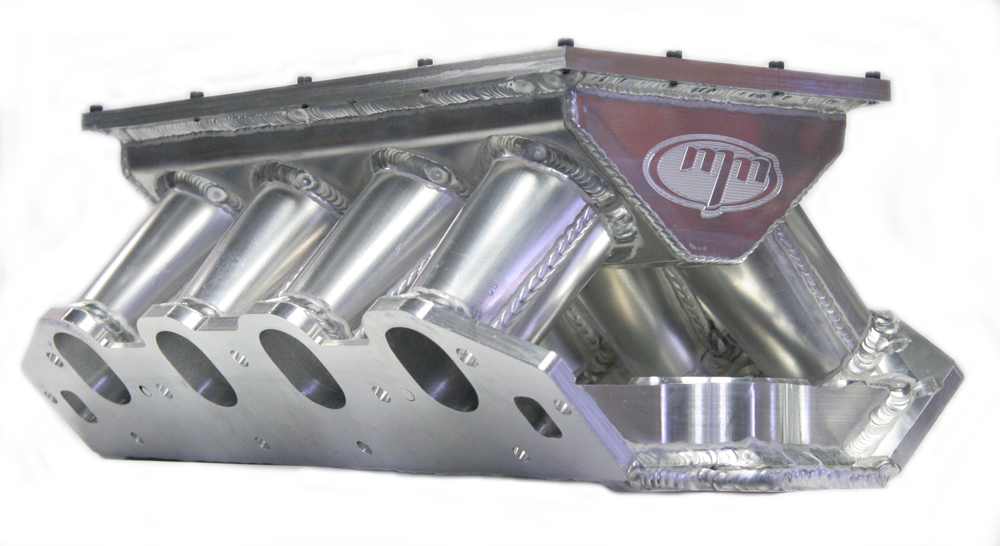
“There’s probably a mathematical formula, but for us it’s experience over the years,” said Tim Linder of M&M Competition Engines, Franklin, Indiana.
“I use experience, although we do use CFD occasionally,” said Bischoff. “My cylinder head guys know more about that than I do. I have a simple chart, and for the most part it holds true.”
Three of the leading key factors in manifold design—especially tunnel-ram-style intakes—are runner length, runner shape, and plenum volume. Conventional wisdom said a longer runner will help with low-end torque while a shorter runner improves high-rpm performance. Optimum runner shapes tend to start as a round throat in the plenum and transition to the shape of the intake-port opening at the base plate. Plenum volume is usually tied to engine displacement in a naturally aspirated (NA) engine, while boosted engines have their own formula.
Overall, these dimensions have to work with each other to achieve ideal power for the intended rpm range, and there will be compromises that the engine builder must choose between.
“I think the biggest thing to emphasize is there are often trade-offs based on the application. We always want to utilize pulse tuning, ram-effect, and optimize plenum size, but the manifold also needs to fit,” said David Visner of Visner Engine Development, Kentwood, Michigan. “For example, if you have a small-tire boosted car, the better trade off may be to have a larger plenum and runners that are technically too short. The development of these manifolds is a work in progress. We are just trying to learn more and build better stuff all the time.”
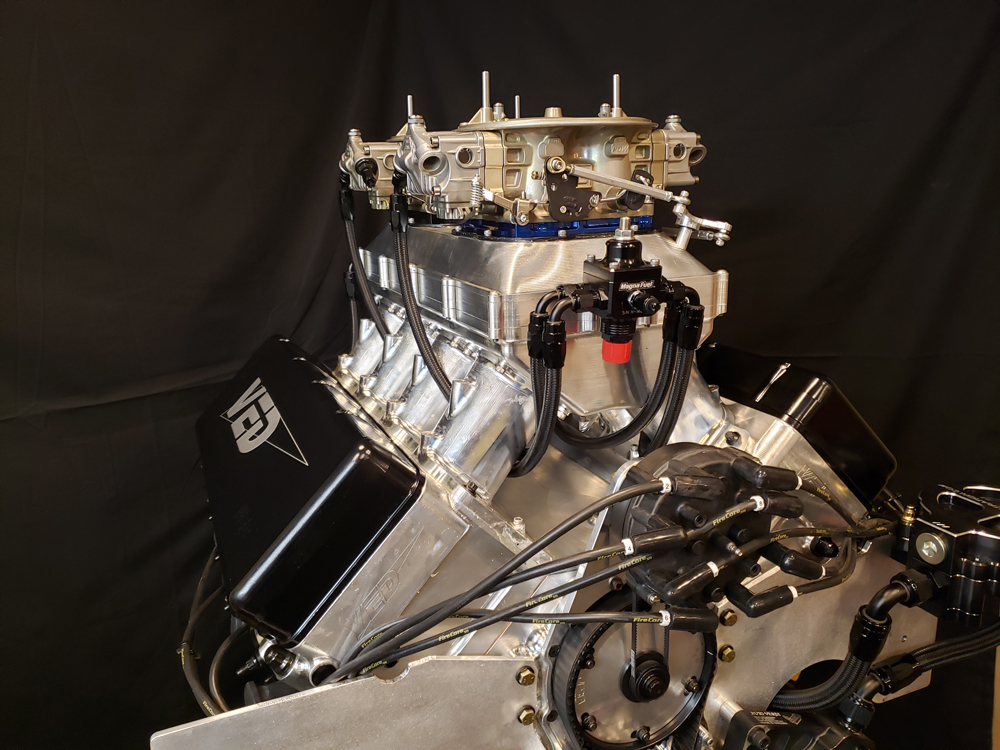
“On a nitrous motor, we tend to make the plenums somewhat smaller because they usually come up against a real tight converter on the brake,” said Linder. “And if you make the plenum as big as you would for an NA motor, a lot of times, they would sneeze and cough up against the brake and not leave clean. So sometimes it’s things like that, that we have learned over the years. For us, everything is more about notes from feedback and stuff that’s worked in the past versus a mathematical formula.”
Conducing A-B tests on intake manifold design can get expensive if a new one is built with only a slight variance in the dimensions. It’s certainly more difficult than changing camshafts. Yet, lessons can be learned. BES worked with a 410-cubic-inch NA engine used in truck pulling, and the customer wanted more rpm.
“We shortened the runners a quarter-inch and gave it another 200 rpm more usable power without sacrificing any peak torque,” recalled Bischoff. “Below peak torque it dropped, but an engine really operates efficiently at no more than a 1,500-rpm range. That was a LS engine, and it’s more critical in a NA engine. But a quarter of an inch can make a difference.”
Drag racers are driving much of the innovation in the intake market with increasing use of boost and freedom to use nitrous oxide when rules permit. They also have a choice between EFI or carburetors in chasing quicker times.
“Drag racers have gone to a lot more boost and fuel injection,” noted Wilson. “You can be a little more creative, but you still have to worry about puddling fuel and getting fuel vaporized into the cylinder. But we’ve also worked with NASCAR and IndyCar teams, so we have a very good understanding of where and how fuel enters the combustion chamber.”
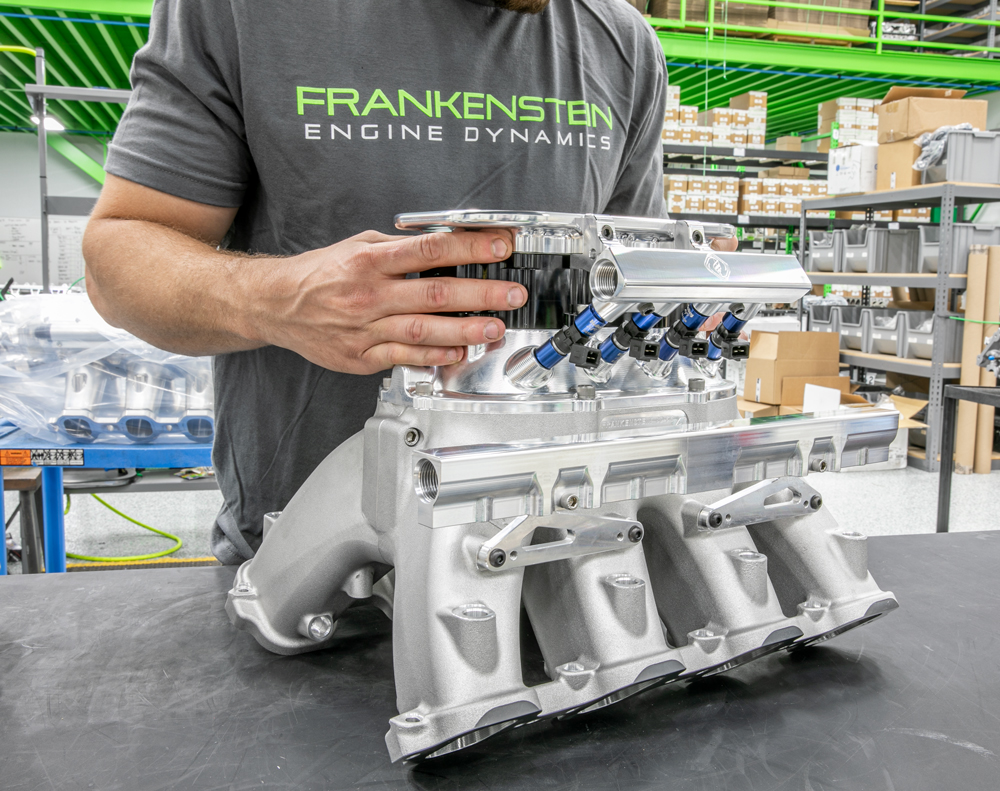
“A carbureted naturally aspirated manifold is about keeping a strong signal to the carburetors with plenum sizing along with runner length and taper,” added Visner. “EFI manifolds also rely on runner sizing but can tolerate larger plenums. Front entry manifolds have issues with the Helmholtz Effect, which creates pressure drops on the front cylinders. This makes the entry and plenum shape very important. With experience, we learn whether it’s more important to oversize the plenum a little bit to slow down the air speed to help hole-to-hole distribution issues, or to target pulse length tuning for ram effect.”
“With EFI, you don’t have the signal to the carburetor, which is a big difference,” noted Lastor. “More guys are going to front entry on their EFI manifold, and also for nitrous. It’s a different way, compared to throttle bodies on top of the plenum. Pro Stock did it, so they’re thinking they want to.”
Bischoff recalled a LS engine with a pair of four-barrel carbs that was in the shop for an EFI conversion. There were two manifolds to test.
“What worked for carbs isn’t necessarily going to work with EFI,” said Bischoff. “The shorter, larger runner made more power with a carb, and it was exactly the opposite with the fuel injection. It just shows that you’re tuning waves, and the charge isn’t as heavy in the plenum area and at the start of the runner with the EFI in relation to carburetion.”
Another type of forced induction that may require a custom intake is a supercharger. “An unusual one is a manifold for a Roots-style blower. There’s nothing crazy about them, they just require a lot more bracing,” said Linder. “Trying to get a sheetmetal manifold strong enough to survive under a 14-71 blower is difficult.”
Frankenstein Engine Dynamics in Weatherford, Texas, offers billet intake manifolds, but they’re designed with a cost-cutting strategy that also allows for some customization.
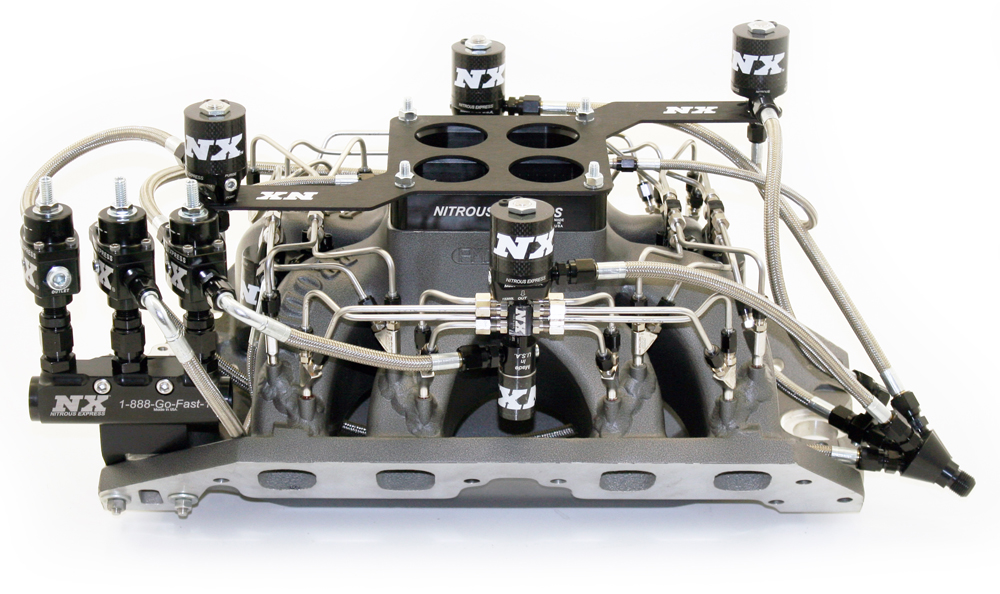
“We try to make all of our manifolds modular, which allows us to put together the best combination of pieces,” explained Jesse Meagher. “It becomes a semi-custom intake where we might have runners suited to a particular cylinder head and rpm range. And we may have a plenum suited to a certain displacement. That allows us to manufacture manifolds at a higher volume and keep the price down.”
The company will still work with a customer seeking a one-off intake for a specific application, although Meagher admitted, “we don’t do a lot of that because the cost and time are more suited to smaller companies.”
Customers may have a few options with a Frankenstein billet intake, such as throttle body size. When Frankenstein does work on a custom intake, it will leverage the R&D into production intakes.
“We already have our cast products in production right now. We just finished developing a two-piece small block LS/LT spider-style manifold that is going to have a large variety of tops to support carburetors or different throttle bodies,” said Meagher. “We’ll have billet elbows for the ProCharger guys. We’ve taken our modular approach to the casting realm. Now, you can get a two-piece cast base, and I have four or five different cast-top options that allow me to mix and match to give the best of both worlds.”
Right now, Frankenstein is developing a proprietary cylinder head/intake manifold package that will fit the rules of an unspecified NHRA class. “We’re defined by the rules of the class, and it’s up to us to explore all of the gray areas and loopholes that we can,” said Meagher. “They’ve made some recent changes to the class, so it’s opened up quite a bit. It allows us to take aspects of many different projects over the years and combine them into something that was previously very restrictive in terms of things like valve angle and general engine layout. This customer presents us with a great opportunity to combine different successes in different types of engine platforms and roll them into one neat little package.”
Customer Mods
There are other major players in the cylinder-head business that manufacture intakes but don’t have a custom shop to develop billet or sheetmetal intakes for specific one-off applications. They offer production cast intake manifolds designed to complement unique features on their cylinder heads and will leave additional modifications up to customers.
“We’re struggling just to keep up with current orders,” said Mark Fretz of Brodix, Mena, Arkansas, adding that shortages in the intake market increased the demand at his plant by up to four-fold in some applications. “Most of the product that leaves us will go to a head-porting shop where they cut them in half, port them and weld them back together. We also supply manifolds to the nitrous companies so they can plumb them.”
Michael Green at Pro-Filer Performance Products in New Carlisle, Ohio, said some of the company’s cast-aluminum intake manifolds were engineered with custom design cues. “With our big block Chevy tunnel-ram manifolds we’re able to provide a manifold that will make the power of a custom sheetmetal intake for a fraction of the price,” said Green, noting that versions are available that cover standard and spread-port heads along with different deck heights. Pro-Filer and Wilson even collaborated on a small block Chevy single-plane intake for conventional 23-degree heads. “We make it, Wilson designed it.”
Companies will leverage other types of teamwork to improve their products. Wilson’s engineers are in contact with racers and often compare notes and test results.
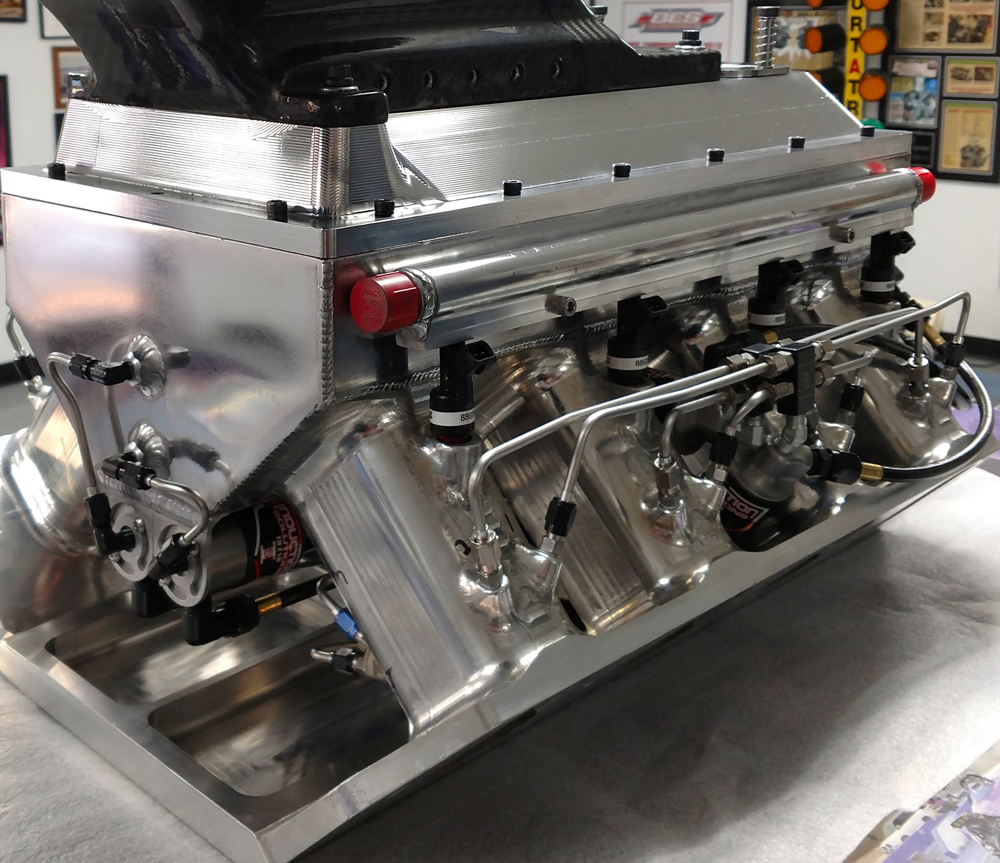
“We’re not under the illusion that teams will bolt on an intake and be happy with it,” said Wilson Manifolds engineer Robbie Mansfield. “They’re going to compare it against everything they’ve ever run.”
Some shops are scaling back their custom intake business. According to Bischoff, BES is building custom intakes only for customer engines built in the shop. Lastor noted that TRE’s turnaround time is now six to eight weeks for a custom intake but may take longer for unusual applications.
“Some of the older engines, like the Ford FE, they’re harder to do,” said Lastor, adding that sourcing raw materials at the right price remains inconsistent.
In the end, the definition of a custom intake manifold in today’s race market can be as glamorous as a full billet piece that shines like a diamond and has precise dimensions that were calculated by an expensive CFD program. Or it could be as blue-collar as an off-the-shelf cast intake found at a swap meet but is now in the hands of an experienced head porter. Yet, the objective is the same for both.
“Some people just don’t realize the power they’ve left on the table with the wrong intake manifold,” concluded Wilson.
Sources
BES Racing Engines
besracing.com
Brodix
brodix.com
Frankenstein Engine Dynamics
frankensteined.net
Late Model Throttle
latemodelthrottle.com
M&M Competition Engines
mmcompetitionengines.com
Pro-Filer Performance Products
profilerperformance.com
TRE Racing Engines
treraceengines.com
Visner Engine Development
visnerengine.com
Wilson Manifolds
wilsonmanifolds.com
 MEMBERSHIP LOGIN
MEMBERSHIP LOGIN JOIN PRI
JOIN PRI


